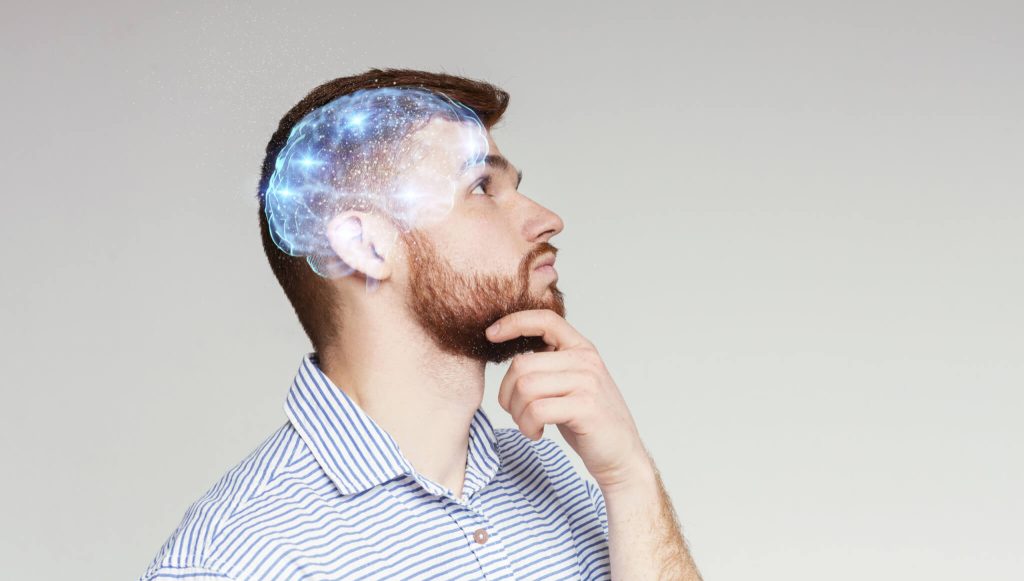

(© Prostock-studio – stock.adobe.com)
Brain maps reveal how we process time and space — and why they sometimes feel distorted
In a nutshell
- Different parts of your brain process time in distinct ways: the back of the brain combines time and location information, while the front of the brain processes them separately, allowing for flexible timing regardless of where you’re looking.
- Scientists discovered specialized “time maps” in the front of the brain, where groups of neurons that respond to similar durations are organized together, similar to how a city organizes similar businesses in districts.
- This research helps explain why our perception of time can vary depending on what we’re doing or where we’re looking — it’s a result of multiple brain systems working together to create our experience of time.
TRIESTE, Italy — Time and space shape every moment of our lives, yet scientists are only now discovering how our brains process these fundamental aspects of experience. New research shows that different brain regions handle timing and location in distinct ways, offering fresh insights into how we track when and where things occur.
Researchers at the International School for Advanced Studies (SISSA) in Trieste, Italy have mapped how the brain organizes temporal information. Their study, published in Nature Communications, reveals that some brain areas process time and space together, while others handle them separately.
“We wanted to understand whether space and time are processed independently or not,” explain study authors Valeria Centanino, Gianfranco Fortunato, and Domenica Bueti, in a statement. Using advanced brain imaging technology, they studied 13 healthy volunteers who viewed brief visual displays on a screen. These displays appeared in different locations and lasted between one-fifth of a second to just under a second. Participants simply had to judge how long each display remained visible.
The back of the brain, which first receives visual information, processes time and space together in a straightforward way. In this region, called the occipital visual cortex, the same groups of neurons respond to both how long something lasts and where it appears. “The connection is strong because space and time are processed by the same neurons,” the researchers explain. “The longer the viewing time, the greater the brain activity in these neuron populations.”
Moving forward in the brain, the parietal cortex serves as a processing hub where timing becomes more sophisticated. This region contains a mix of neural networks. Some track both time and location together, while others specialize in processing just one or the other. This arrangement allows for flexible processing of temporal information depending on what we’re doing or paying attention to.
The most advanced time processing occurs in the front of the brain, in areas that help plan movements. Here, time processing becomes completely independent of location. Groups of neurons form specialized “time maps,” where cells that respond to similar durations are arranged together. This organization allows for precise timing regardless of where something appears in our field of view.
The brain’s structured approach to processing time helps explain why our perception of duration can vary based on what we’re doing or where we’re looking. For example, the same amount of time might feel different depending on whether we’re focused on a single location or scanning multiple areas.
“This study advances our understanding of how space and time, two fundamental aspects of our experience of the world, are processed and integrated in the human brain,” conclude the researchers. They note that different brain areas each contribute uniquely to how we perceive time, working together in a hierarchical system.
This research demonstrates that our sense of time emerges from multiple brain systems working together. Starting with basic duration tracking in visual areas and building up to sophisticated temporal maps in the front of the brain, these systems help create our seamless experience of time and space.
Paper Summary
Methodology
Researchers employed a clever experimental design where participants had to compare the duration of visual stimuli (small patches of dynamic noise) to a memorized reference duration of 0.5 seconds. The stimuli could appear at different locations in the lower visual field, either close to or far from the center of vision. Using sophisticated brain imaging and analysis techniques, they tracked how different brain regions responded to various combinations of stimulus duration and location. This allowed them to create detailed maps of how temporal and spatial information is processed throughout the visual system.
Results
The study revealed a clear progression in how duration information is processed along the visual pathway. Early visual areas showed duration-dependent responses that were tied to specific locations. Middle regions like the IPS demonstrated both location-specific and location-independent duration processing, with organized maps for both space and time. Frontal regions showed predominantly location-independent duration processing. Importantly, duration maps were found to be systematically related to spatial maps in certain brain regions, though they were generally smaller and more variable between individuals.
Limitations
The study focused only on visual duration processing in the lower visual field, so findings might not fully generalize to other sensory modalities or visual field locations. The relatively small sample size of 13 participants, while typical for high-resolution fMRI studies, means individual differences in temporal processing might not be fully captured.
Discussion and Takeaways
This research provides crucial insights into how our brains construct our experience of time. The discovery of systematic relationships between spatial and temporal maps suggests that time perception is fundamentally linked to how we process space, at least in early stages of visual processing. This helps explain various temporal illusions and suggests new approaches for understanding temporal processing disorders.
Funding and Disclosures
The research was supported by the European Research Council under the European Union’s Horizon 2020 research and innovation program, the Italian Ministry of University and Research under the FARE call, and the PRIN2017 program. The authors declared no competing interests.
Publication Information
Published in Nature Communications (2024) with the title “The neural link between stimulus duration and spatial location in the human visual hierarchy” by Valeria Centanino, Gianfranco Fortunato, and Domenica Bueti at the International School for Advanced Studies (SISSA) in Trieste, Italy. DOI: 10.1038/s41467-024-54336-5







